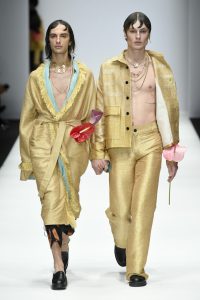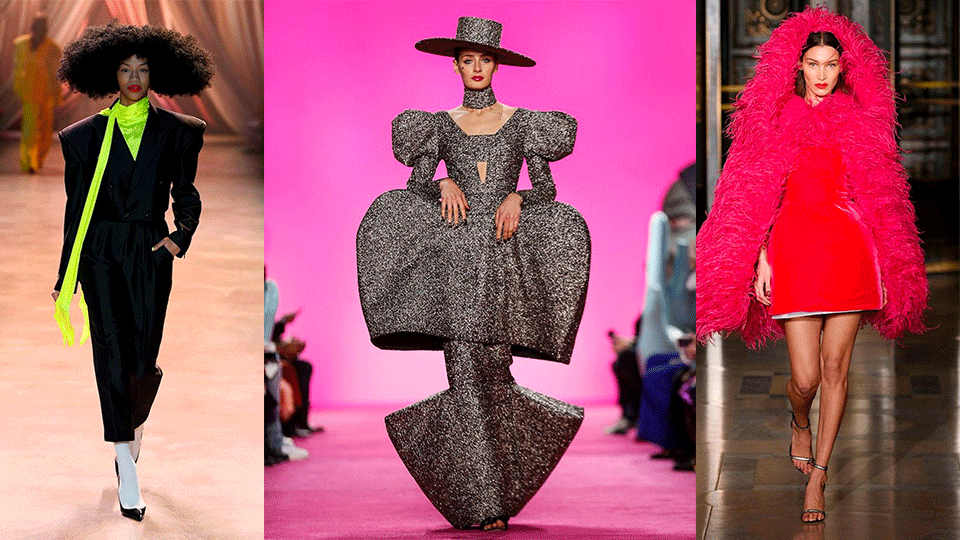- À New Wave to Fashion, À New Way of Living. Download Now on iOS Android Canada SS22
- hello@alahausse.ca
Designer Spotlight: Amesh Wijesekera – Gender inclusive eco-friendly collection

How Japanese designers are building a more sustainable fashion industry
July 28, 2021
Brand Spotlight: Deadwood – a vegan capsule collection that will give you life!
August 1, 2021
Written by: Hana El-Sharabasy
Upcoming Sri Lankan designer, Amesh Wijesekera has gained popularity with the debut eco collection. At the epicentre of garment manufacturing, Wijesekera is anything but typical.
Eco Friendly Ethics
His entire collection uses almost exclusively deadstock remnants. In Sri Lanka where there is copious amounts of textile waste, his business model is an economic choice. Using the existing industry to his advantage, he works with female textile specialists to create his garments on a small scale. Combating waste and utilizing sustainable morals are an important part of his business.

His Inspiration
His collection utilizes bright colours and baggy silhouettes that draw inspiration from his native dress. Sri Lankan traditional clothing is often accessorized with intricate beading to contrast the simplicity of their design. Most often using solid, light coloured fabrics to optimize breathability and mobility. Wijesekera draws parallels between native dress in his new collection. He creates genderless designs that incorporate both western and east asian styles.

Impacts
Many of the prominent themes in his work are considered controversial. He speaks about the unspoken, tearing down taboo notions. This is especially true in his more conservative environment. His complete portfolio is comprised of what he calls “genderless” garments. The garments borrow silhouettes from both womens and menswear that intentionally create an undefined image. He says it’s all up to the person to define their gender, not their clothes. A recent collection titled “Flower Boys” features “male models dressed in fuchsia embroidered shirts and low-cut knitted vests”.
Although he has made no comment, it’s safe to assume that the name of the collection makes a reference to Tyler, The Creators 2017 album Flower Boy. The album caught the medias attention when it was the artist switched from his typical rap lyrics about violence against women and agressively homophobic comments, to the coming out as Queer. A black man in the hip hop industry coming out broke down barriers for queer musicians and artists.
Gender Inclusivity in Fashion
The term unisex was first used in 1963 in The New York Times tp describe Parisian fashion that has started to bleed between womens and mens.
Even before unisex was established by The NY Times, women borrowed many menswear staples, like structured trousers and suit sets. And we can’t forget that at some point in history, men wore high heels (and we wish it stayed that way). Even though for hundreds of years womens and mens fashion took inspiration from each other they typically had differing fits. Lets take for example a denim jacket, a womens denim jacket often has a tailored fit, while a mens one is more boxy and adorned with more pockets.
Androgenous Fashion in the 60’s
The late 60’s were a big time for androgenous fashion. The movement was led by icon David Bowie who supported platforms, high waisted pants and a face of makeup on and off the stage. In the early 70’s men stopped incorporating femininity into their wardrobe when it became associated with homosexuality. Bowie didn’t let his fashion define his gender or sexuality.
Edgy Unisex Fashion of the 80’s and 90’s
Again in the late 80’s punk fashion advocated for androgenous fashion. Punk styles had heavy emphasis on juxtaposition between hyper feminine silhouettes and heavy masculine styles. The punk fashion niche didn’t take off in mainstream fashion until a similar stream arose in the 90’s called grunge.
2021
Now in 2021, male celebrities are seen on magazine covers or on the red carpet in typical womenswear. But off the red carpet, this type of dress is associated with homosexuality that puts people at risk.

What's Next?
After his graduation from the Academy of Design in Sri Lanka he was discovered during his participation in the annual Mercedes Benz Fashion show in Colombo. He has since been given numerous international awards and has exhibited globally, even in London at the Graduate Fashion Show. Currently, he is focused on developing his label that continues to draw inspiration from his background and gender identity to drive much needed change in the industry.
References:
- https://tradlands.com/pages/how-unisex-clothing-came-to-be
- https://textilevaluechain.in/news-insights/apparel-fashion-retail-news/fashionvaluechain/eco-conscious-gender-inclusive-clothes-by-sri-lankan-designer/
- https://shop.notjustalabel.com/
- https://www.5xfest.com/5xpress/sri-lankan-designer-creates-big-waves-in-the-fashion-industry



